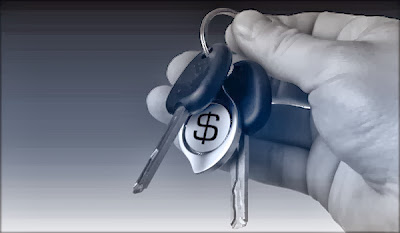To find the best deal on a car purchase, you need to understand how car retail pricing works – what parts of a car deal serve as the greatest sources of profit to dealers. Once you know about the kinds of income that a dealer makes from a sale, you will be able to determine which ones to tap in a given situation to negotiate the best deal.
The profit sources in a car deal
Car dealerships get a good profit margin on the sticker price, alone. They also build up their profit in other ways, though.
Buying trade-ins cheaply and selling them off at a healthy profit is a major profit-spinning activity at dealerships. Selling expensive vehicle financing deals is a major source of profit. A dealership only needs to get a customer to agree to a fraction of a percentage point over what the banks offer, to turn a great profit.
Getting a new car buyer to agree to extra services such as rust-proofing is a profitable activity.
As a car buyer, you need to concentrate on finding ways to not contribute too much to the dealership’s bottom line.
Finding ways to not pay the sticker price
Dealerships build up the final price you pay out of a number of components. Knowing what these pricing components are can help you work your final price down.
The price holdback that the dealer gets: Dealer holdback makes up 2% of the final purchase price. This is a kind of cashback that car manufacturers give their dealers. Dealerships are usually unwilling to accept proposals that go so low that they cut into their holdback. When car salesmen talk about not making a dime off a deal, they can mean that they don’t make a dime past the holdback. When you know about holdbacks, though, you can call their bluff.
The incentives that the factory gives to the dealer: Many car buyers are aware of the incentives that dealers have the discretion to offer their customers. Often, though, they aren’t aware of the factory-to-dealer incentives that car manufacturers offer their dealers. These are special rewards that dealerships receive when they are successful in pushing specific car models.
While dealers are often unwilling to give up their dealer incentives to, they can be persuaded by customers who know how the dealer incentive system works. It’s usually easiest to persuade dealers to part with their dealer incentives towards the end of the month when they are most worried about their sales targets.
The current demand-supply balance in the market for the vehicle you are interested in: The less popular a car model is, the more anxious car dealer is to cut a deal. It isn’t just unpopular models that are easy to haggle over. Often, variants within a model have specific levels of trim and equipment that turn out to be unpopular. You could negotiate a deal on such a model.
Getting the most for your trade-in
Car dealerships pay wholesale prices on trade-ins. Then, they turn around and charge retail prices on them of buyers coming in for used cars. Many car buyers don’t realize that dealerships make far more money on buying and selling used cars than they do selling new cars. When dealers act uninterested in a customer’s used car, it’s often an act. People with trade-ins should know that their used car is often an excellent profit source to the dealer and should not let go at a disappointing price.
It takes effort and skill to haggle over the trade-in value of a car. Many car buyers are unwilling to go to the trouble. One easy way to overcome this problem is to simply not trade your car in at the dealership that you’re buying a new car from. Instead, you should separate the buying and selling. If you have a Dodge RAM that you wish to trade in for a Ford Explorer, you should talk to a used Chrysler dealer about the RAM. You will get a better price for your car at a dealership that specializes in Chrysler products. If you try to trade it in at a Ford dealership, you won’t get as good a price.
Bill Nixon worked for a car dealership for many years as both a mechanic and as a sales associate. Now retired, he enjoys helping people by sharing his insights online.


